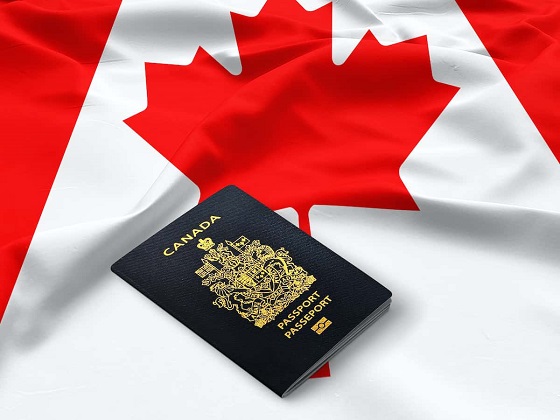Alberta
Premier Smith to Ottawa: Alberta can’t afford thousands of asylum seekers right now

From Free Alberta Strategy
For decades, Canada’s immigration policies were uncontroversial – parties across the spectrum maintained generally sensible policies.
But the current government in Ottawa has ditched this consensus, and the public mood is turning fast.
A large influx of newcomers has put a significant strain on public services and the housing market across the country.
Alberta, in particular, is feeling the strain, as our province receives both a disproportionately large share of the immigrants arriving in Canada, as well as by far the largest number of people moving between provinces.
Earlier this year, the Alberta government reported that in the year from April 2023 to April 2024, Alberta’s population had grown a record 4.11%, representing 204,677 people.
This is by far the highest annual growth rate in the country, outpacing second-place Ontario by nearly a full percentage point.
Importantly, international migration is responsible for about 68% of the increase, interprovincial migration is responsible for about 25%, and just 8% is caused by natural increase.
Another area of immigration that has significantly increased in Alberta is asylum seekers, which have more than doubled from 5,076 per year to 11,292 per year.
Of course, this represents just a small portion of the overall immigration to Alberta, and Alberta actually accepts a much smaller share of asylum seekers (about 5% of the total) compared with our population (about 12% of Canada).
But, Ottawa is now pushing to change this – they want provinces like Alberta to accept more of their “fair share” of asylum seekers – despite the fact that Alberta already receives more than its “fair share” of other types of immigrants.
Federal Immigration Minister Marc Millers says the federal government anticipates full cooperation from all provinces and territories as it strives for a fair and sustainable approach to managing the influx.
He says the federal government has “levers that we need to push and pull” when it comes to enticing provinces to agree to their terms:
“The reality is that Quebec and Ontario are facing disproportionate pressures, compared to any other province in the country – as they have been welcoming the majority of asylum seekers,” says the Minister.
“We will have proper incentives for those willing to welcome asylum seekers, and will take a holistic view with regards to other immigration programs based on participation – as this is work we cannot do alone, nor unilaterally. All options remain on the table.”
In other words, the federal government is once again planning on spending more of our tax dollars to effectively bribe the provinces’ to go along with their policies.
This idea isn’t new – Quebec has already urged the Trudeau government to disperse asylum-seekers more evenly across the provinces.
Premier Smith, however, is saying no:
“Section 95 of the Constitution is clear – immigration is an area of shared authority between the federal government and the provinces.”
“We are informing the Government of Canada that until further notice, Alberta is not open to having these additional asylum seekers settled in our province,” she added.
“We simply cannot afford it.”
Maybe, when the full details of the federal government’s plan are made public, the numbers will stack up.
But, based on past precedent, it seems unlikely.
More likely, this is just another agreement with the federal government that Alberta can’t afford to make.
Time and time again, we’ve seen the federal government approach the provincial government with a deal that – in Ottawa’s view – is good for the province.
We know, as we’ve seen with the nationalized childcare fiasco, that these deals very rarely work out for Alberta.
The Free Alberta Strategy continues to be Alberta’s shield against federal overreach, ensuring that Albertans remain in control of our future.
This issue is just the latest battle in which our unwavering defence of our provinces’ best interests can make a real difference.
If you believe in defending Alberta from Ottawa, join us!
Your contribution will help ensure that the Free Alberta Strategy has the resources and voice it needs to push back.
Donate today to stand up for Alberta’s sovereignty and sustainability!
Alberta
CPP another example of Albertans’ outsized contribution to Canada

From the Fraser Institute
By Tegan Hill
Amid the economic uncertainty fuelled by Trump’s trade war, its perhaps more important than ever to understand Alberta’s crucial role in the federation and its outsized contribution to programs such as the Canada Pension Plan (CPP).
From 1981 to 2022, Albertan’s net contribution to the CPP—meaning the amount Albertans paid into the program over and above what retirees in Alberta received in CPP payments—was $53.6 billion. In 2022 (the latest year of available data), Albertans’ net contribution to the CPP was $3.0 billion.
During that same period (1981 to 2022), British Columbia was the only other province where residents paid more into the CPP than retirees received in benefits—and Alberta’s contribution was six times greater than B.C.’s contribution. Put differently, residents in seven out of the nine provinces that participate in the CPP (Quebec has its own plan) receive more back in benefits than they contribute to the program.
Albertans pay an outsized contribution to federal and national programs, including the CPP because of the province’s relatively high rates of employment, higher average incomes and younger population (i.e. more workers pay into the CPP and less retirees take from it).
Put simply, Albertan workers have been helping fund the retirement of Canadians from coast to coast for decades, and without Alberta, the CPP would look much different.
How different?
If Alberta withdrew from the CPP and established its own standalone provincial pension plan, Alberta workers would receive the same retirement benefits but at a lower cost (i.e. lower CPP contribution rate deducted from our paycheques) than other Canadians, while the contribution rate—essentially the CPP tax rate—to fund the program would likely need to increase for the rest of the country to maintain the same benefits.
And given current demographic projections, immigration patterns and Alberta’s long history of leading the provinces in economic growth, Albertan workers will likely continue to pay more into the CPP than Albertan retirees get back from it.
Therefore, considering Alberta’s crucial role in national programs, the next federal government—whoever that may be—should undo and prevent policies that negatively impact the province and Albertans ability to contribute to Canada. Think of Bill C-69 (which imposes complex, uncertain and onerous review requirements on major energy projects), Bill C-48 (which bans large oil tankers off B.C.’s northern coast and limits access to Asian markets), an arbitrary cap on oil and gas emissions, numerous other “net-zero” targets, and so on.
Canada faces serious economic challenges, including a trade war with the United States. In times like this, it’s important to remember Alberta’s crucial role in the federation and the outsized contributions of Alberta workers to the wellbeing of Canadians across the country.
Alberta
Made in Alberta! Province makes it easier to support local products with Buy Local program

Show your Alberta side. Buy Local. |
When the going gets tough, Albertans stick together. That’s why Alberta’s government is launching a new campaign to benefit hard-working Albertans.
Global uncertainty is threatening the livelihoods of hard-working Alberta farmers, ranchers, processors and their families. The ‘Buy Local’ campaign, recently launched by Alberta’s government, encourages consumers to eat, drink and buy local to show our unified support for the province’s agriculture and food industry.
The government’s ‘Buy Local’ campaign encourages consumers to buy products from Alberta’s hard-working farmers, ranchers and food processors that produce safe, nutritious food for Albertans, Canadians and the world.
“It’s time to let these hard-working Albertans know we have their back. Now, more than ever, we need to shop local and buy made-in-Alberta products. The next time you are grocery shopping or go out for dinner or a drink with your friends or family, support local to demonstrate your Alberta pride. We are pleased tariffs don’t impact the ag industry right now and will keep advocating for our ag industry.”
Alberta’s government supports consumer choice. We are providing tools to help folks easily identify Alberta- and Canadian-made foods and products. Choosing local products keeps Albertans’ hard-earned dollars in our province. Whether it is farm-fresh vegetables, potatoes, honey, craft beer, frozen food or our world-renowned beef, Alberta has an abundance of fresh foods produced right on our doorstep.
Quick facts
- This summer, Albertans can support local at more than 150 farmers’ markets across the province and meet the folks who make, bake and grow our food.
- In March 2023, the Alberta government launched the ‘Made in Alberta’ voluntary food and beverage labelling program to support local agriculture and food sectors.
- Through direct connections with processors, the program has created the momentum to continue expanding consumer awareness about the ‘Made in Alberta’ label to help shoppers quickly identify foods and beverages produced in our province.
- Made in Alberta product catalogue website
Related information
-

 2025 Federal Election2 days ago
2025 Federal Election2 days agoOttawa Confirms China interfering with 2025 federal election: Beijing Seeks to Block Joe Tay’s Election
-

 COVID-192 days ago
COVID-192 days agoNearly Half of “COVID-19 Deaths” Were Not Due to COVID-19 – Scientific Reports Journal
-

 2025 Federal Election2 days ago
2025 Federal Election2 days agoHow Canada’s Mainstream Media Lost the Public Trust
-

 2025 Federal Election1 day ago
2025 Federal Election1 day agoBREAKING: THE FEDERAL BRIEF THAT SHOULD SINK CARNEY
-

 2025 Federal Election2 days ago
2025 Federal Election2 days agoReal Homes vs. Modular Shoeboxes: The Housing Battle Between Poilievre and Carney
-

 International23 hours ago
International23 hours agoNew York Times publishes chilling new justification for assisted suicide
-

 2025 Federal Election2 days ago
2025 Federal Election2 days agoPOLL: Canadians want spending cuts
-

 2025 Federal Election19 hours ago
2025 Federal Election19 hours agoMark Carney Wants You to Forget He Clearly Opposes the Development and Export of Canada’s Natural Resources






